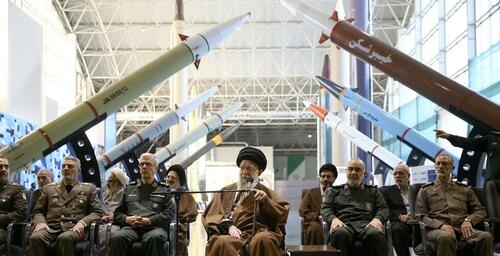Col. MacGregor: Trump & The Storm Of The Century
Authored by Col. Douglas Macgregor (ret.)
The fear in many nations’ capitals is that President Donald Trump’s return to Washington might make Israel feel more confident in attacking Iran. According to Mike Evans, founder of the Friends of Zion Museum in Jerusalem, “There is no world leader Trump respects more than Netanyahu.”
The evangelical leader also confides that President Trump would support an Israeli attack before his inauguration on the assumption that the destruction of Iran’s oil production facilities would devastate Iran’s economy, inducing Iran to end the war with Israel before President Trump assumes his office. This thinking by no means excludes an Israeli decision to strike Iran’s nuclear development sites as well.
What Trump will or will not do is unknown. When the illusive stillness in the standoff between Tehran and Jerusalem will end is also unknown.
One thing is certain: If America joins Israel in its war against Iran, the outcome will be a geopolitical showdown that could dramatically alter the world as we know it. It is the storm of the 21st century and, for the moment, the American ship of state is sailing right into it.
At a minimum, Trump should demand answers from his civilian and military advisors to four important questions.
Question 1. What is the American purpose in waging war against Iran? Is Washington’s purpose to destroy the Iranian state? To destroy its capability to wage war against Israel? To eliminate Iran’s developing nuclear capability? Or to decapitate the Iranian state in the hope that the Iranian people will overthrow their national government?
All these goals demand serious study and analysis. In some cases, they overlap; in others they do not. The answers require identifying resources, manpower, capabilities, and the time needed to achieve these goals.
It is obvious that America’s air and naval forces will have to deliver powerful disabling strikes through dense Iranian air and missile defenses while potentially defending themselves and American military bases against attacks by Iranian and allied forces in the region. How long can these forces operate before their stocks of munitions are exhausted and their human and materiel losses are replaced?
Based on these answers, the stated objectives may or may not be attainable. National political and military leaders habitually plan and organize to achieve short, decisive outcomes, but wars always last longer than anticipated.
Question 2. How will U.S. military power achieve the objectives?
What is the right mix of weapon systems and munitions? What targets promise effects that profoundly shape Iran’s ability to fight? In the aftermath of the Second World War, studies of bombing effectiveness revealed that the most important contribution air power made to Germany’s defeat was the destruction of Germany’s fuel production and the transportation network to move it. Its second-most important contribution was to cause German air forces to defend Germany’s cities and industries, thus stripping the German army of its close air support. But thousands of tons of bombs were still dropped on thousands of targets with minimal impact on the German war machine.
Can air and missile power alone compel the Iranian State to submit to Israeli and American demands? To date, no amount of precision-strike forces linked to space-based and terrestrial, persistent intelligence, surveillance, and reconnaissance (ISR) capabilities has delivered victory in war.
The Kosovo air campaign inflicted enormous damage on the Serbian economy, but its impact on Serbian ground forces was minimal. Yet once Moscow withdrew its promise of energy and food support to the Serbian people, the destruction of power plants and civilian and commercial infrastructure did induce the Serbian leadership to remove its forces from Kosovo.
Read the full article here.
Tyler Durden
Wed, 11/20/2024 – 19:40


